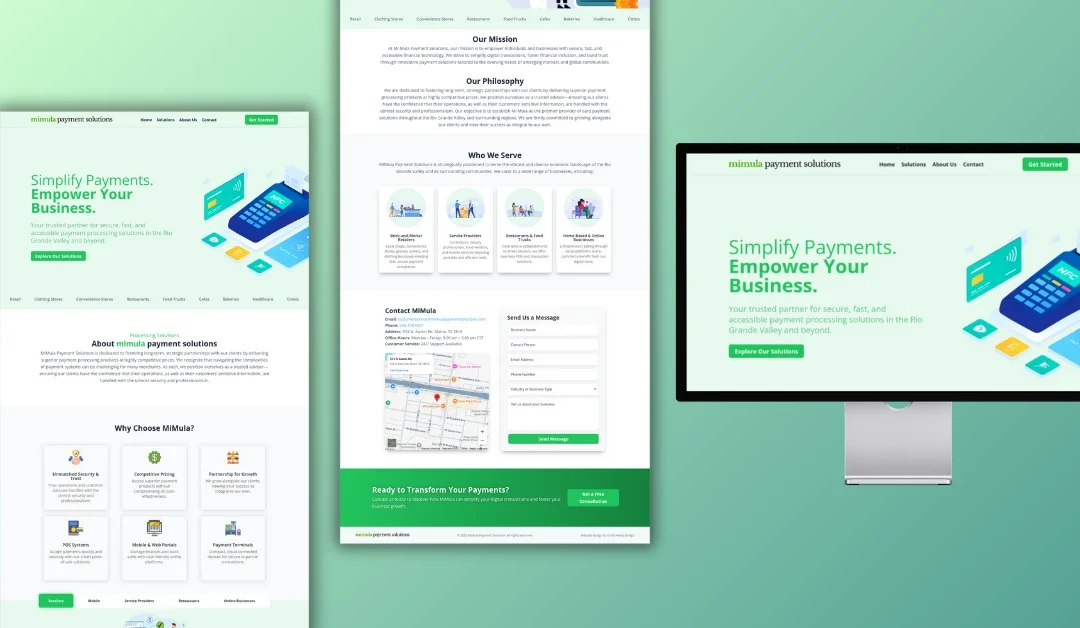The Power of Customer Feedback: Unlocking Insights for Your Business
Have you ever wondered what your customers really think about your service? Like, do they love your products or consider them just "okay"? Imagine losing valuable insights because you’re not asking the right questions or collecting feedback effectively. For small business owners right here in South Texas, customer feedback can either be that golden ticket to growth or a missed opportunity standing in the way of your success.
In this discussion, we’ll break down various types of customer feedback and how you can use it to enhance your services, improve your digital presence, and ultimately give your customers an experience they’ll love.
Why Customer Feedback Matters
Customer feedback isn’t just a nice-to-have; it’s a must! It’s the honest input you get from your customers about their experiences with your products or services. This isn’t just customer chit-chat; it’s a goldmine of information that helps you skip assumptions and zero in on what your clients truly want. Leveraging this data helps you:
- Pinpoint actual pain points.
- Predict and reduce customer churn.
- Identify and resolve existing issues.
- Spot opportunities for improvement.
- Guide your business in the right direction.
10 Ways to Gather Customer Feedback
So, let’s dive into the different ways you can gather this invaluable information without breaking a sweat.
1. Customer Surveys
Surveys are one of the most effective and cost-friendly methods to gather direct feedback. They can range anywhere from a quick "How did we do?" email after a purchase to in-depth questionnaires.
Local Tip: Use friendly language in your surveys—think, “¿Cómo estuvo tu experiencia?” rather than formal jargon. You want your customers to feel comfortable sharing their insights. Try HubSpot’s survey tools to streamline the process!
2. Customer Reviews
These are the unsolicited thoughts your customers share about your business, whether they’re on Google, Yelp, or Facebook.
Pro Tip: Pay attention to both positive and negative feedback. A 5-star review is great but how you respond to complaints can make a big difference in retaining customers. Go ahead, acknowledge feedback and show that you care!
3. Bug or Error Reports
Even the best systems run into hiccups. Encouraging your customers to report issues means you’re proactive in fixing them, which not only helps improve your product but also shows that you value their input.
Valley Insight: A smoothly designed error report form can make all the difference. Keep it simple and compassionate—your customers want to feel heard!
4. Feature Requests
Is there something your customers wish your product could do? Feature requests are a direct line to understanding what your customers want to see improved.
Get Engage: Setting up channels where customers can propose features shows that you not only listen but are also willing to act.
5. Product Ratings
After a purchase, asking customers to rate their experience gives you real-time insight into what you’re doing right or wrong.
Quick Note: Make it low-effort. A simple thumbs up or down can yield big data down the road.
6. Customer Support Interactions
Support channels offer immediate and raw feedback. If customers are frustrated, they’ll tell your support team—and it’s crucial to capture that feedback!
Pro Tip: Consider using tools to automatically record support interactions. This makes it easier to analyze trends and patterns—no need to take notes!
7. In-App Feedback
Don’t wait for customers to leave your app to gather feedback. Integrating feedback mechanisms directly within your application can provide context that surveys miss.
Stay Smooth: Make sure it doesn’t disrupt their experience. The goal is to keep it seamless and non-intrusive.
8. Customer Interviews
While this approach is more hands-on, customer interviews allow for deep diving into user experiences and challenges. You can explore their problems and aspirations in a guided conversation.
Friendly Suggestion: Build a rapport first! People are more willing to share their real thoughts when they feel comfortable.
9. Social Media Mentions
Your customers are chatting about you on platforms like Facebook and Instagram. Keep an eye on what they’re saying, both good and bad.
Insider Tip: Engage with these mentions! Responding in a friendly manner can foster community and boost your reputation.
10. Customer Behavioral Data Insights
Sometimes words aren’t needed. Observing how customers interact with your product can yield insights you might miss if you’re only relying on feedback forms.
Game Plan: Using analytical tools to track behaviors (like drop-off points in the purchase funnel) helps strengthen your strategy based on actual customer habits.
Conclusion: The More You Know
So there you have it! From customer surveys to behavioral data, plenty of feedback methods are at your disposal. In this digital age, failing to leverage customer insights is como no tener a tu mejor amigo a tu lado—like not having your best friend by your side.
By incorporating these feedback strategies, you’re not just improving products; you’re also building trust and creating a loyal customer base. Remember, each piece of feedback is an opportunity, so don’t wait!
Ready to level up your online presence and adopt a strategy that truly resonates with your customers? Let’s chat and start building something that works for you!
Source:
https://blog.hubspot.com/service/types-of-customer-feedback-examples










